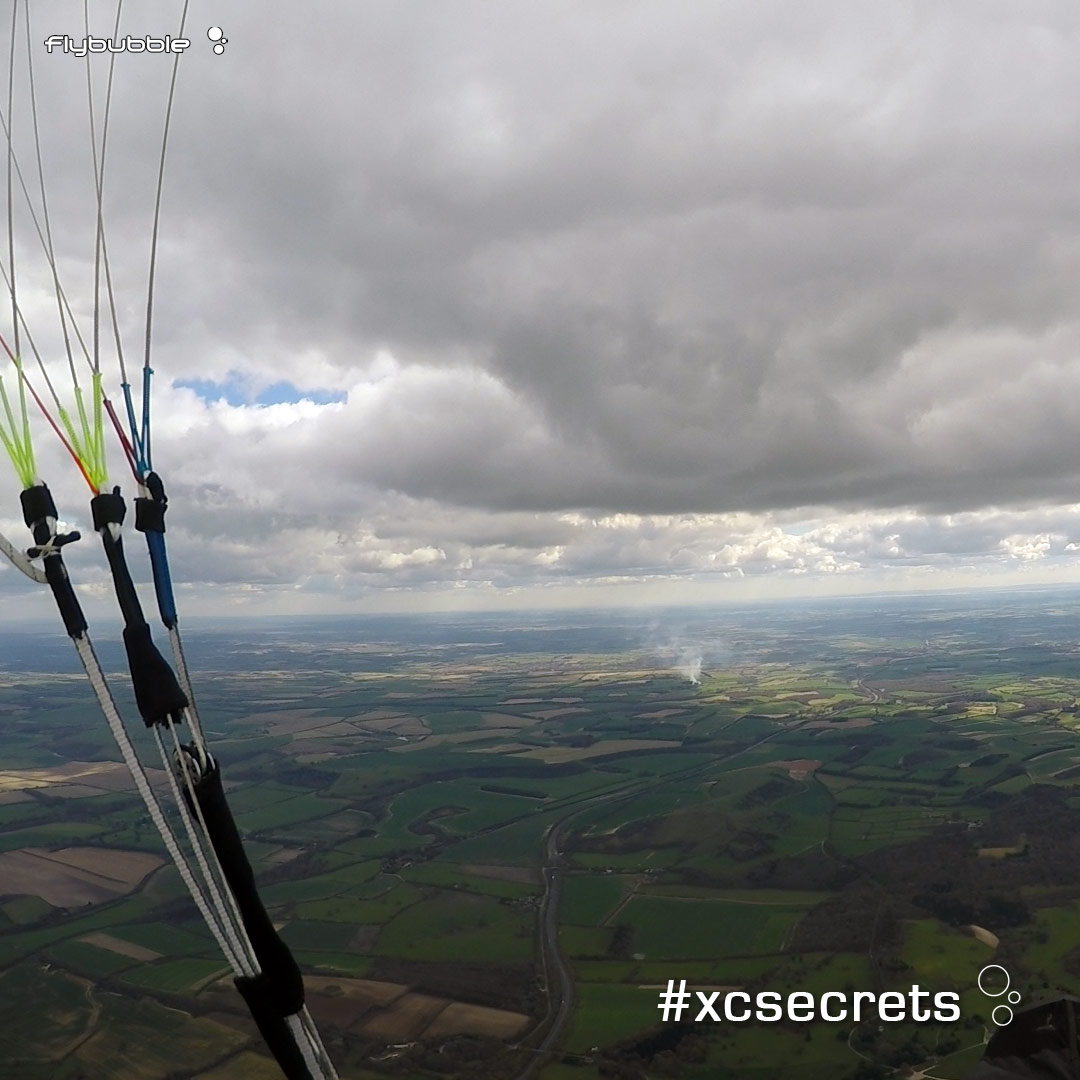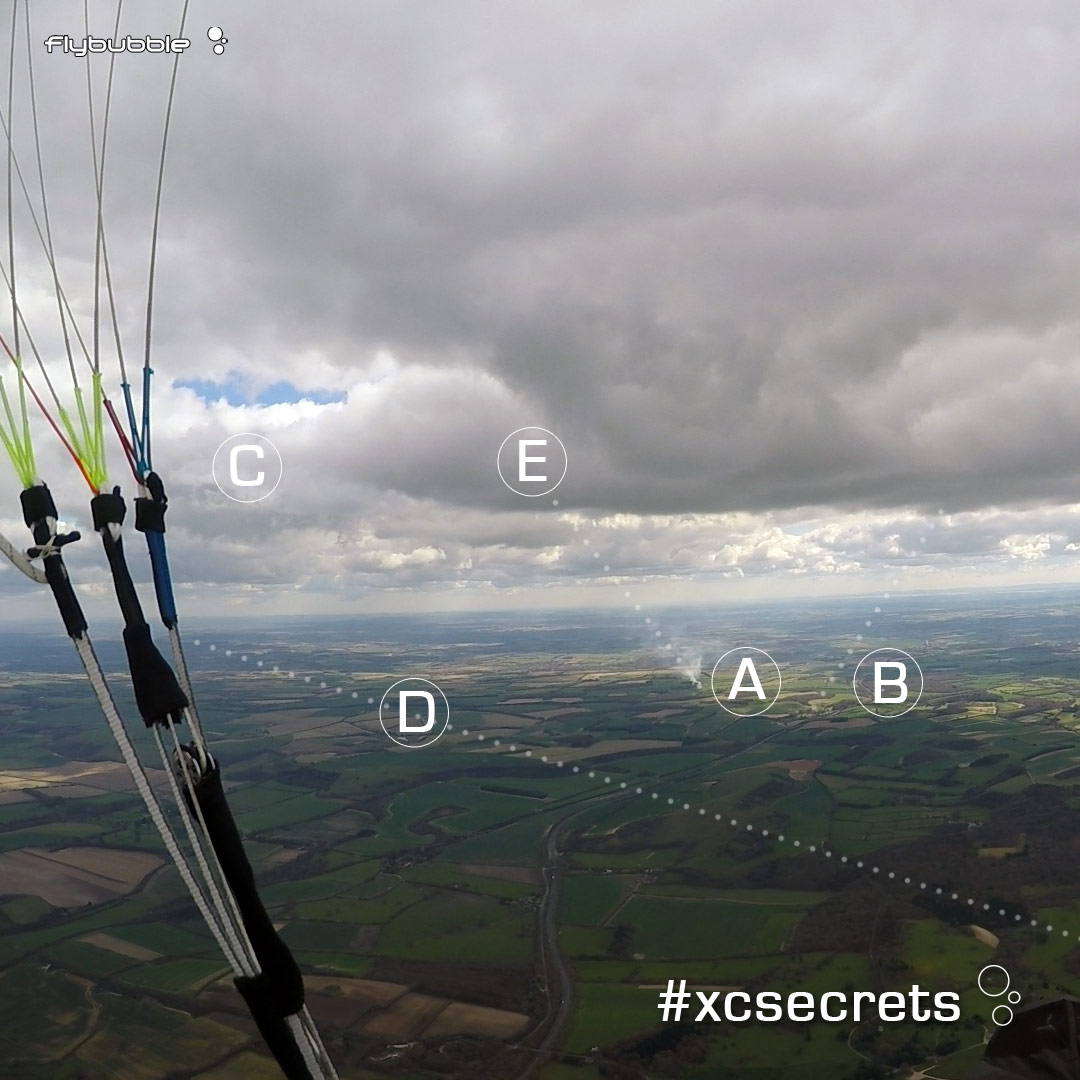
What do you see? Analyze the snapshot above yourself, before scrolling down for answers.


4. Shaded afternoon glide across the flatlands, UK summer, early afternoon.
A. There's smoke pulling up and away from a fire, but is it a lure to a poor area, or a sign? It indicates the general wind direction (pulling away and to the left towards E) but has some spreadout suggesting changing wind directions due to multiple thermals, or converging winds, or a weak inversion that the thermal is struggling to get through.
B. The stripes of shadow and light in the hazy air show the sun is coming in at an angle from the right. The combination of this angle with the wind direction, means the same ground is heated for a long time while the thermals and resulting clouds drift parallel to the band of sunshine along line D. This kind of streeting is common in the afternoon in the UK.
C. A gap in otherwise unbroken cloud suggests this is a sink-hole where the gentle upward flow is reversed. To be avoided while gliding.
D. You can expect no thermals low down under this established line of shade, so you have to get up to near the clouds before crossing it to make use of the gentle cloud suck.
E. Signs of decay here, and a convex cloud base suggesting moisture-laden air is not lifting. The area further to the right looks most promising where the cloudbase is higher and more concave. A glide towards B reduces the shaded transition distance and brings us towards the smoke from the sunny side, so we increase our chances of encountering something on the approach to the fire.
